#ESTEC
Text

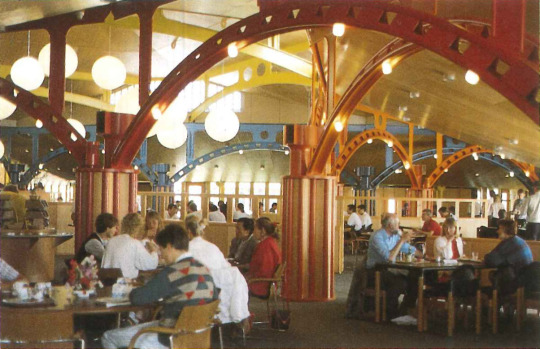
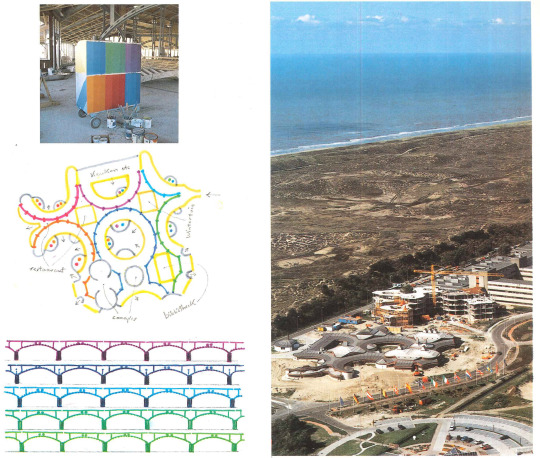





European Space Research and Technology Centre (ESTEC), Noordwijk, the Netherlands. Designed by Aldo ann Hannie van Eyck, 1988 - 1989.
Scan
#scan#aldo van eyck#architecture#ESTEC#space agency#noordwijk#the netherlands#high tech#jaren 80#architectuur
55 notes
·
View notes
Photo

45 years ago… first Swiss astronaut Claude Nicollier
In 1966 Claude Nicollier became a pilot in the Swiss Air Force, switching as an airline pilot with Swiss Air by 1974. In 1978, combining this with studies in Astrophysics, Nicollier was selected a member of the first group of European Space Agency astronauts.
Between 1992 & 1999 the first Swiss astronaut flew 4 space shuttle missions and maintained his role as lead ESA astronaut up to 2007. During his third mission, STS-75 in 1996, Nicollier wore the Omega Speedmaster X-33 analog-digital chronograph prototype, which was officially launched as an operational astronaut/cosmonaut toolwatch by March 1998.
Official 1999 ESA/NASA portraits show him wearing a Breitling Aerospace chronograph but in May 2005, Nicollier became member of the Board of Directors of the Swatch Group and full-time Professor at the École Polytechnique Fédérale de Lausanne.
This 1980 group photo shows ESA astronaut candidates Ulf Merbold (Germany), Claude Nicollier (Switzerland) and Wubbo Ockels (the Netherlands) in a SpaceLab mockup at ESTEC in Noordwijk - NL.
Note Nicollier wore a sturdy Omega Flightmaster pilot watch.
(Photo: ESA/NASA)
#Airline pilot#Aviator#Astronaut#ESA#NASA#ESTEC#chronograph#pilot watch#Omega#Flightmaster#Speedmaster#Flightmaster Only#montres#uhren#sat#horloges#wrist watch#MoonwatchUniverse#SWFG#wrist-chronograph#Omega museum#spaceflight#Zulu time
4 notes
·
View notes
Text

A directional sign to get to the ESA (European Space Agency) and the ESTEC (European Space Research and Technology Centre). In The Netherlands.
#ESA#ESTEC#European Space Agency#directional sign#sign#signs#directional signs#E#photography#photo#photograph#picture#photos#photographs#image
1 note
·
View note
Link
The Space News Podcast. SpaceTime Series 26 Episode 132 *Rare heavy element discovered in stellar collision Astronomers have discovered the rare heavy element tellurium being produced in the kilonova collision of a pair of neutron stars. *Planetary defence mission update The European Space Agency’s Hera spacecraft has arrived at ESA’s ESTEC test centre in the Netherlands as it continues preparations for next October’s launch on its planetary defence mission to the asteroid Didymos and its small moon Dimorphos. *Moscow threatens star wars As Moscow continues its war against Ukraine, the Kremlin is also continuing to ratchet up its threats against the west. *The Science Report Tai Chi could slow the progression of Parkinson's disease. Lead exposure is likely to blame for 5.5 million adult deaths from heart disease, and the loss of 765 million IQ points in kids under five globally every year. Just 20-25 minutes of exercise a day may be enough to offset the heightened risk of death. Skeptics guide to why there are no new ghosts And our regular guest: Tim Mendham from Australian Skeptics Listen to SpaceTime on your favorite podcast app with our universal listen link: https://spacetimewithstuartgary.com/listen and access show links via https://linktr.ee/biteszHQ Additionally, listeners can support the podcast and gain access to bonus content by becoming a SpaceTime crew member through www.bitesz.supercast.com or through premium versions on Spotify and Apple Podcasts. Details on our website at https://spacetimewithstuartgary.com For more SpaceTime and show links: https://linktr.ee/biteszHQ If you love this podcast, please get someone else to listen to. Thank you… To become a SpaceTime supporter and unlock commercial free editions of the show, gain early access and bonus content, please visit https://bitesz.supercast.com/ . Premium version now available via Spotify and Apple Podcasts. For more podcasts visit our HQ at https://bitesz.com
#astronomical#collision#defense#discovery#esa#estec#hera#kilonova#launch#mission#netherlands#neutron#phenomenon#planetary#research#spacecraft#stars#stellar#tellurium#testing
0 notes
Text

ESTEC
SCIENCE PAGES ⚛️♒♾️📡🔭🚀🛰️VEIT SCHWIERTZ

0 notes
Photo
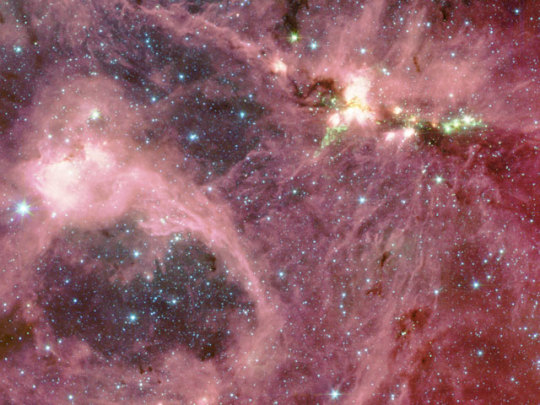
Massive Star Forming Region DR21 in Infrared
Credits: ESTEC, ESA, JPL, Caltech, NASA
44 notes
·
View notes
Photo
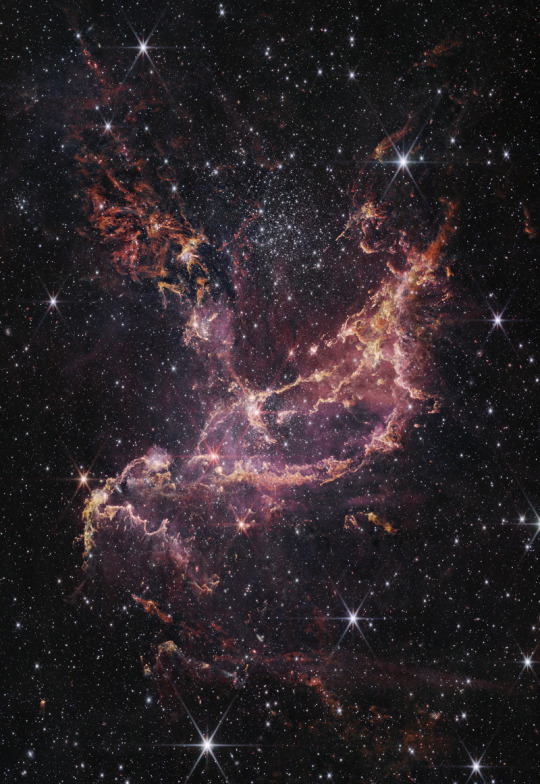
2023 January 13
Young Star Cluster NGC 346
Image Credit: Science - NASA, ESA, CSA, Olivia C. Jones (UK ATC), Guido De Marchi (ESTEC), Margaret Meixner (USRA)
Processing - Alyssa Pagan (STScI), Nolan Habel (USRA), Laura Lenkić (USRA), Laurie E. U. Chu (NASA Ames)
Explanation: The most massive young star cluster in the Small Magellanic Cloud is NGC 346, embedded in our small satellite galaxy's largest star forming region some 210,000 light-years distant. Of course the massive stars of NGC 346 are short lived, but very energetic. Their winds and radiation sculpt the edges of the region's dusty molecular cloud triggering star-formation within. The star forming region also appears to contain a large population of infant stars. A mere 3 to 5 million years old and not yet burning hydrogen in their cores, the infant stars are strewn about the embedded star cluster. This spectacular infrared view of NGC 346 is from the James Webb Space Telescope's NIRcam. Emission from atomic hydrogen ionized by the massive stars' energetic radiation as well as and molecular hydrogen and dust in the star-forming molecular cloud is detailed in pink and orange hues. Webb's sharp image of the young star-forming region spans 240 light-years at the distance of the Small Magellanic Cloud.
∞ Source: apod.nasa.gov/apod/ap230113.html
174 notes
·
View notes
Text

New SpaceTime out Friday....
SpaceTime 20231103 Series 26 Episode 132
Rare heavy element discovered in stellar collision
Astronomers have discovered the rare heavy element tellurium being produced in the kilonova collision of a pair of neutron stars.
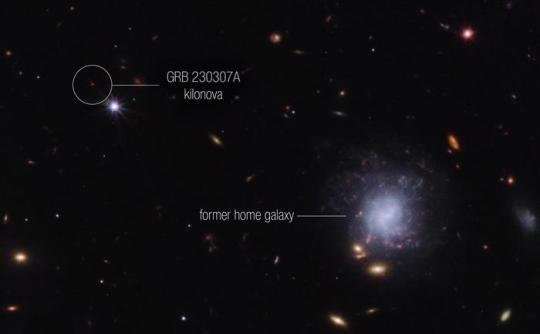

Planetary defence mission update
The European Space Agency’s Hera spacecraft has arrived at ESA’s ESTEC test centre in the Netherlands as it continues preparations for next October’s launch on its planetary defence mission to the asteroid Didymos and its small moon Dimorphos.
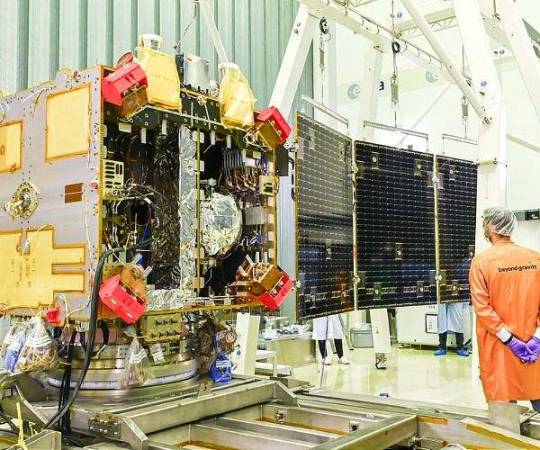

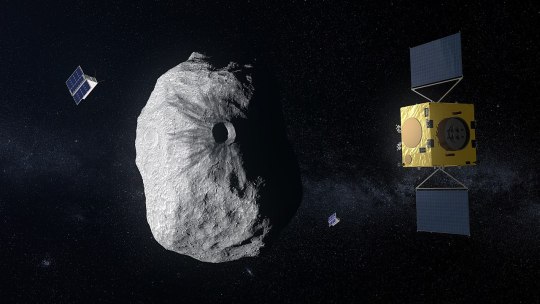
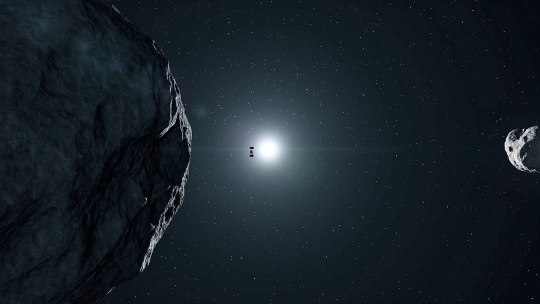
Moscow threatens star wars
As Moscow continues its war against Ukraine, the Kremlin is also continuing to ratchet up its threats against the west.



The Science Report
Tai Chi could slow the progression of Parkinson's disease.
Lead exposure is likely to blame for 5.5 million adult deaths from heart disease, and the loss of 765 million IQ points in kids under five globally every year.
Just 20-25 minutes of exercise a day may be enough to offset the heightened risk of death.
Skeptics guide to why there are no new ghosts
SpaceTime covers the latest news in astronomy & space sciences.
The show is available every Monday, Wednesday and Friday through Apple Podcasts (itunes), Stitcher, Google Podcast, Pocketcasts, SoundCloud, Bitez.com, YouTube, your favourite podcast download provider, and from www.spacetimewithstuartgary.com
SpaceTime is also broadcast through the National Science Foundation on Science Zone Radio and on both i-heart Radio and Tune-In Radio.
SpaceTime daily news blog: http://spacetimewithstuartgary.tumblr.com/
SpaceTime facebook: www.facebook.com/spacetimewithstuartgary
SpaceTime Instagram @spacetimewithstuartgary
SpaceTime twitter feed @stuartgary
SpaceTime YouTube: @SpaceTimewithStuartGary
SpaceTime -- A brief history
SpaceTime is Australia’s most popular and respected astronomy and space science news program – averaging over two million downloads every year. We’re also number five in the United States. The show reports on the latest stories and discoveries making news in astronomy, space flight, and science. SpaceTime features weekly interviews with leading Australian scientists about their research. The show began life in 1995 as ‘StarStuff’ on the Australian Broadcasting Corporation’s (ABC) NewsRadio network. Award winning investigative reporter Stuart Gary created the program during more than fifteen years as NewsRadio’s evening anchor and Science Editor. Gary’s always loved science. He studied astronomy at university and was invited to undertake a PHD in astrophysics, but instead focused on his career in journalism and radio broadcasting. He worked as an announcer and music DJ in commercial radio, before becoming a journalist and eventually joining ABC News and Current Affairs. Later, Gary became part of the team that set up ABC NewsRadio and was one of its first presenters. When asked to put his science background to use, Gary developed StarStuff which he wrote, produced and hosted, consistently achieving 9 per cent of the national Australian radio audience based on the ABC’s Nielsen ratings survey figures for the five major Australian metro markets: Sydney, Melbourne, Brisbane, Adelaide, and Perth. The StarStuff podcast was published on line by ABC Science -- achieving over 1.3 million downloads annually. However, after some 20 years, the show finally wrapped up in December 2015 following ABC funding cuts, and a redirection of available finances to increase sports and horse racing coverage. Rather than continue with the ABC, Gary resigned so that he could keep the show going independently. StarStuff was rebranded as “SpaceTime”, with the first episode being broadcast in February 2016. Over the years, SpaceTime has grown, more than doubling its former ABC audience numbers and expanding to include new segments such as the Science Report -- which provides a wrap of general science news, weekly skeptical science features, special reports looking at the latest computer and technology news, and Skywatch – which provides a monthly guide to the night skies. The show is published three times weekly (every Monday, Wednesday and Friday) and available from the United States National Science Foundation on Science Zone Radio, and through both i-heart Radio and Tune-In Radio.
#science#space#astronomy#physics#news#nasa#esa#astrophysics#spacetimewithstuartgary#starstuff#spacetime
22 notes
·
View notes
Text
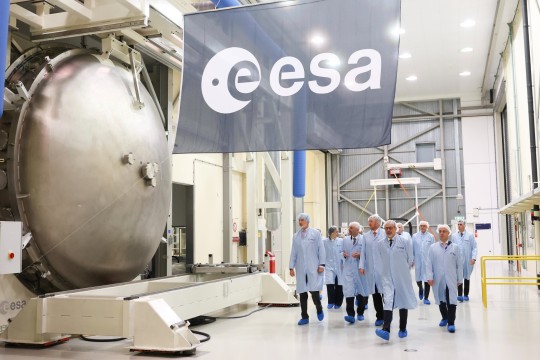
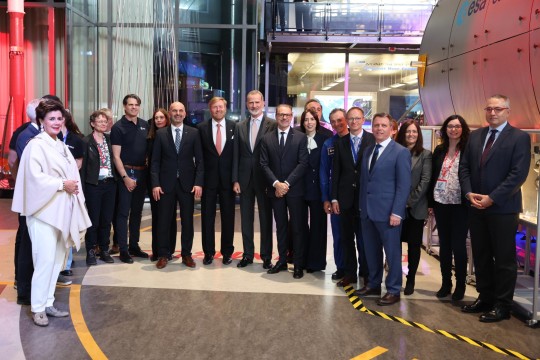




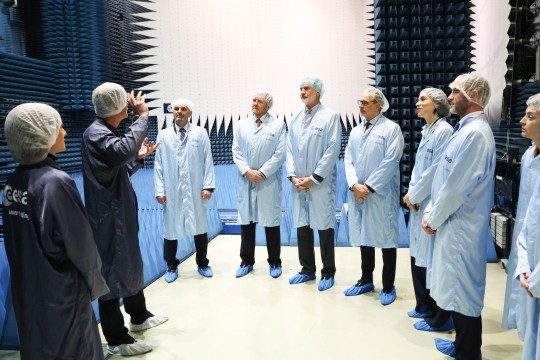

Spanish State Visit to Netherlands - Day
King Willem-Alexander and King Felipe visit the Test Center of the European Space Research and Technology Center of the European Space Agency (ESA-ESTEC) located in Noordwijk (Netherlands). Both kings also visit the model of the European Columbus module at ESA-ESTEC and greet Spanish and Dutch astronauts. April 18, 2024.
📷 casareal.es
#king willem alexander#king felipe vi#dutch royal family#spanish royal family#spanish state visit to netherlands
4 notes
·
View notes
Text

context because i have so many sillies
Enjoying the people, has a good time: Euclid, Cassini, Voyager 1, Lucy, Compton, Dawn, Gaia, Herschel, Opportunity, Spirit, Earth Return Orbiter, CALIPSO
Silent/standing in the corner of the part: Hubble, Fermi, Voyager 2, Mars Reconnaissance Orbiter, INTEGRAL, OAO-2, IUE, Mars Global Surveyor, also CALIPSO
Trashes the place, disables security cameras: Kepler, Chandra, Sojourner, DART, Juno, Mars Odyssey, Philae, also IUE
BLASTS MUSIC FROM THE LEAF ROOM (the big room with the speakers): MAVEN, Perseverance, IXPE, Spitzer, CloudSat, Psyche, also Philae
steals ESTEC sign from outside: James Webb, Swift, Ingenuity, also Psyche
got trapped in the CPTR (the room with the foam spikes): Curiosity, Rosetta, New Horizons, Landsat-9, OSIRIS-REx, InSight
knocked out on the golf course ragdolled: ICESat-2, also InSight, TESS, OCO-2, JUICE
READY TO BURN THE ENTIRE CENTER DOWN: Planck and Giotto
4 notes
·
View notes
Photo
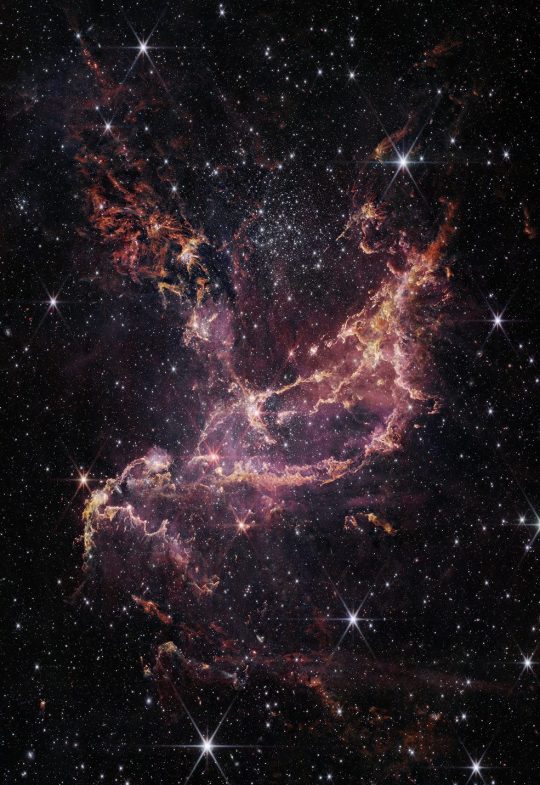
NGC 346, shown here in this image from NASA’s James Webb Space Telescope Near-Infrared Camera (NIRCam).
Image processing: A. Pagan (STScI), N. Habel (USRA), L. Lenkic (USRA) and L. Chu (NASA/Ames)
Photo : NASA, ESA, CSA, O. Jones (UK ATC), G. De Marchi (ESTEC), and M. Meixner (USRA)
#art#photography#space#cosmos#cosmic#universe#NGC 346#nasa#james webb space technology#esa#stars#blast#infrared#chandra x-ray observatory
19 notes
·
View notes
Text

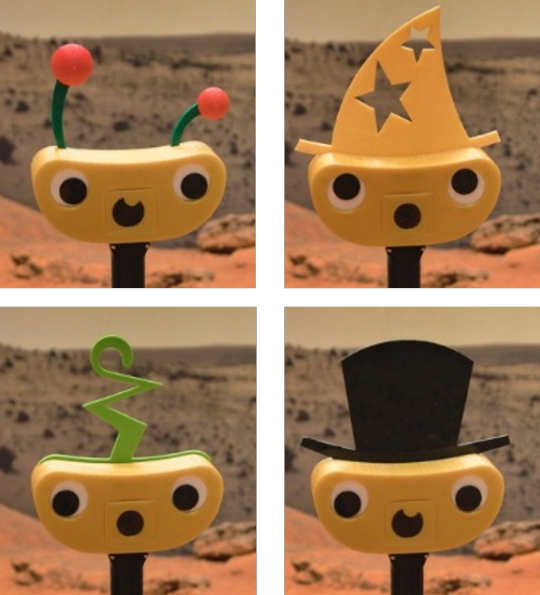

ExoMy (2020), created by the Planetary Robotics Laboratory, European Space Agency. Europe’s Rosalind Franklin ExoMars rover has a younger sibling – ExoMy. The blueprints and software for this mini-version of the ExoMars rover are available for free so that anyone can 3D print, assemble and program their own ExoMy rover. It uses off-the-shelf components, and it's brain is a Raspberry Pi computer. “ExoMy actually began as a one-off demonstrator at the ESA Open Day at ESTEC here in the Netherlands in 2018. Visitors of all ages could drive it across the lab’s ‘Mars Yard’, a test facility that mimics Martian terrain. It was a big hit, which made us think about a version that people could build for themselves,” says ESA trainee, Maximillian Ehrhardt. Realistic features include the ‘triple-bogie’ suspension system, working solar panels, and a head-mounted camera. New features include a customisable face with interchangeable hats – an idea that sadly came too late to add to the original ExoMars rover.
56 notes
·
View notes
Text
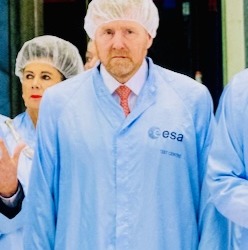
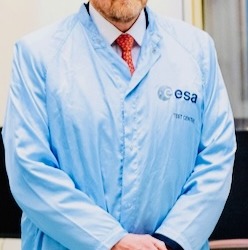


Through the Years → Willem-Alexander of the Netherlands (1,451/∞)
18 April 2024 | Netherlands King Willem-Alexander and Spanish King Felipe look on during a tour of the test center of the European Space Research and Technology Center (ESTEC) in Noordwijk. The Spanish royal couple are on a two-day state visit to the Netherlands. (Photo by Mischa Schoemaker/ANP/AFP via Getty Images)
#King Willem Alexander#The Netherlands#2024#Mischa Schoemaker#ANP#AFP via Getty Images#through the years: Willem Alexander
1 note
·
View note
Text
I’m honored and stoked to have been invited by the European Space Agency to deliver a talk on Chandrayaan 3 and India’s lunar ambitions at the Space for Inspiration event this Thursday, Jan 18 at ESTEC, Netherlands. 🚀🌗
If you’re in Amsterdam this week and would like to meet to chat space, science, the Web, or writing, get in touch.
0 notes
Link
Did you know Galileo was born in the Netherlands in the 1990s? Europe’s own global navigation satellite system was developed in ESA’s technological heart, ESTEC, in Noordwijk, almost three decades ago. Since then, it has grown to become one of the most complex and critical infrastructures ever built in Europe, as well as the largest European satellite constellation and ground segment.
0 notes
Text
Hera's wings of power
The solar wings that will power ESA’s Hera asteroid mission for planetary defence as it ventures out to meet the Dimorphos asteroid have been cleared for flight. As part of its current test campaign at ESA’s ESTEC Test Centre in the Netherlands, the spacecraft commanded the deployment of the wings one at a time, as it will do in space directly after launch – known as a ‘hot deployment’.The…
View On WordPress
0 notes